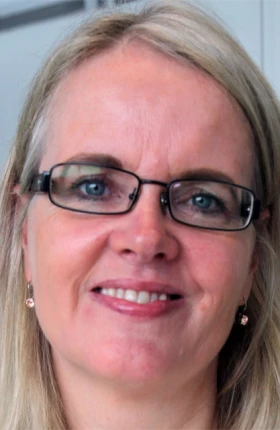This interview is a part of TeBIT 2015 Executive Report: Digital Delivers .
“Digital has to be a concerted, company-wide effort, with telcos not only implementing new capabilities but also changing internal processes. Telcos need to do both to have the speed and agility required to support the business.”
For telcos, the competitive landscape is changing on multiple fronts, with new services and new players battling for subscribers. This requires operators to embrace nontraditional areas, such as digital, and to work in faster, more agile ways. For insight on how one operator—Telecom Italia—is tackling these challenges, BCG and ETIS spoke with the company’s director of IT and convergent architecture, Gian Enrico Paglia.
In what areas are you currently investing?
We are investing heavily in digital and in the systems through which we engage with the customer, such as CRM. We are also investing in big data, the cloud, and the evolution of our infrastructure.
How do you see digital initiatives and big data affecting the business environment for telcos over the next few years?
Digital is essential if telcos want to be able to compete. Big data is also crucial, as it helps you understand everything that is happening around you—for example, whether your infrastructure is working and what your customers are doing. More important, it helps you gain insight. With big data, you can identify customer needs that otherwise would go undiscovered, understand customer behavior, and grasp how users perceive the quality of products and services. Longer term, you can monetize big data—create a new sellable asset.
TeBIT 2015 survey responses suggested that many telcos are investing in digital initiatives without having an overall digital strategy in place. What is Telecom Italia’s approach?
We have found that digital has to be a concerted, company-wide effort, with telcos not only implementing new capabilities but also changing internal processes. Telcos need to do both to have the speed and agility required to support the business in the digital era. In our case, this concerted effort has given rise to a coherent view on digital across the company and a long-term plan.
This year’s survey also revealed that while big-data initiatives tend to be led by the business side, digital initiatives seem to be an IT undertaking. Is this the approach at Telecom Italia?
In our case, the path for digital transformation involves a number of programs, all of which have stakeholders from across the company—from the business side and from IT. Even if the execution is an IT responsibility, the process is more than a technical effort. Operators need to develop new ways of working, across the enterprise, to ensure the required speed and agility.
The main objective is to enable the company to compete in the digital business—to maintain our commercial stake in a telecom market that is very competitive. For IT, a side effect of this effort is that it creates an opportunity to transform our infrastructure, replacing legacy infrastructure with new technology that has a lower total cost of ownership. New technology also enables operators to develop products and services for less money and get them to market faster. In effect, telcos move toward a paradigm where they are developing smaller services in a more dynamic way. So operators become faster, more efficient, and more agile companies, while they improve quality.
Overall, the TeBIT data suggested that telecom operators are outsourcing more selectively. At the same time, it showed a comparatively high degree of outsourcing at Telecom Italia. From your perspective, what are the critical tasks that telcos cannot—or should not—delegate to external providers?
Clearly there are areas where outsourcing is necessary—areas, for instance, where operators have fluctuations in the required capacity. It is much easier—and more practical—to adjust for changes in demand by complementing the internal staff with an external workforce. Yet there are certain areas where telcos want to be in control. In engineering, for example, we prefer to control all of the critical topics and processes, such as design and integration testing, particularly for business-critical systems.
The level of fluctuation can also affect how operators structure outsourcing contracts. Operations, for example, tend to have more stable capacity requirements than software development.
Over the past couple of years, we have been working to insource as much as possible, and as a result, we have reduced our level of outsourcing. But insourcing should be done in conjunction with efforts to boost productivity and reduce overhead and inefficiencies in processes. So we have set up a massive change program internally to help our staff take over the work that had been done by the external workforce and gain efficiencies in the process.
In TeBIT 2011, Telecom Italia’s Luca Franco Varvello shared some insights on the company’s outsourcing approach. In the time since, have you adopted any new strategies to further improve the sourcing model?
One thing we have done is to move from outsourcing contracts based on generic terms to contracts based on service elements. So for infrastructure, for example, we will contract with providers on the basis of cost for specific operations and service elements. For application development, we will manage on both man-days and function points. This gives us better control over the productivity of the vendor.
Telecom Italia is an integrated telecom operator. From an IT perspective, what challenges does this present?
The main challenge is that when compared with the mobile business, the fixed business has much higher complexity in the back-end systems and network—the technology and the processes used are more complex, as is the regulatory environment. As an incumbent, we have to provide wholesale services to other licensed operators, and these are heavily regulated.
Commercially, bringing mobile and fixed together gives a telco opportunities to leverage convergence and better satisfy customers’ needs. But on the technical side, integration means mixing something that is lean and virtual with something that is largely physical. This is especially true in the B2B segment, where there are a multitude of ways in which operators can provide services to their business customers. The challenge is keeping this complexity under control.
Commercial off-the-shelf (COTS) software is something Telecom Italia uses quite intensively in some parts of the value chain. What has been the company’s experience with COTS software?
The challenge with COTS software is that it can come with very high costs that are difficult to keep under control. You pay for the software, then you pay for the maintenance, and then, when you think you are finished paying, you discover that a new functionality has become available—but as a new part number. So you end up paying for that, too, because that was not part of your original contract.
The other thing about COTS software is that you’re buying very complex software, but you usually make use of only a small subset of its capabilities. And you have to customize it—a lot, in some cases—to obtain the specific functionality you need. Since you wind up doing customization in the end, it often makes more sense—except in very specific cases—to embrace open-source or custom-built software from the start.
How should a telco implement software? Is it better to develop the software internally or to work with an integrator that would develop the software according to a telco’s requirements?
If an operator is big enough, it should be developing its own software with its own programmers. In the end, IT is a technical job. If a telco hands over the technical tasks to a systems integrator, it will be in control of the operator’s fundamental assets in the end, because it will be the only one that knows the details.
The other thing a telco should be doing is codevelopment. If you look at other sectors, there is an open-source process that is well defined, and complex software is being developed using that process. But this isn’t happening in the telecom sector. It’s a closed environment. Many telcos are buying or developing similar capabilities—even if those capabilities do not help differentiate them in the marketplace. For example, we buy the software we need to get call data records from switches into the IT systems, and it costs millions of dollars. I’m sure that most other telcos are buying this same software. It’s hard to believe that telcos can’t work together to develop something open that they can all use and share through a community process.
And the lack of codevelopment is mainly because telecom operators always think about differentiation and how to use it to compete in the market and gain market share, isn’t it?
Yes, but what telcos forget is that they are not competing as much against each other as they are against new players. We should be thinking about competition in terms of the telecom industry going up against other industries, such as media.
How important is a stable IT architecture for a highly productive and efficient IT function?
I think it is very important. If you are an elephant, you can aspire to become an agile elephant, but at the end of the day, you will still be an elephant. In other words, the form factor counts. If you really want to make a step-change in agility—which is essential if you want to compete in the digital business—you need to become a tiger. The companies we are competing with now—such as Apple, Amazon.com, and Facebook—they are already tigers. To compete with them, telecom operators need to transform their architecture, not simply change their processes. This means that telcos need an IT infrastructure made of modular components that are developed independently by small teams, quickly and continuously. Transformation of the architecture is the key to becoming an agile player.
What do you see as the most important technology advancements or investment trends for telcos in the coming years?
I think the cloud paradigm will be very important. Specifically, I see a platform-as-a-service approach. Operators would develop their applications as small services and then deploy them on a cloud-based platform where they can be executed and operated. The operator would also have foundational services, such as communications and integration, on the cloud-based platform. This approach would enable the architectural transformation to modular components that I described. And that, in turn, would enable the step-change in agility that telcos need if they are to compete—and thrive.





